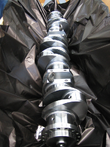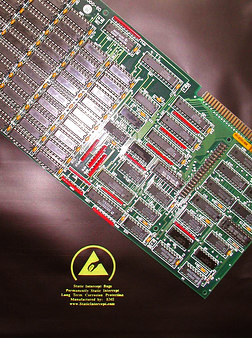 The US Military has packaging specifications to which companies packing products for military use, if so designated in their contract, should adhere. The central document is the MIL-STD-20731E Standard Practice for Military Packaging. This 183 page document has a great deal of information for contractors to follow, including definitions such as what is reusable, what is consumable, how to prepare the product for packaging, marking, etc. The 2073 document also includes the methods on how to package. For instance, Method 41 – “Watervaporproof bag, heat sealed. The item, preserved, wrapped, and cushioned as required in 5.2.3.6, shall be enclosed in a close fitting heat sealed bag conforming to MIL-DTL-117, Type I, Class E, Style 1, 2 or 3; or Type I, Class F, Style 1; or Type II, Class E, Style 1. (Note: For electrostatic protection refer to 5.2.4.1.)”.
The US Military has packaging specifications to which companies packing products for military use, if so designated in their contract, should adhere. The central document is the MIL-STD-20731E Standard Practice for Military Packaging. This 183 page document has a great deal of information for contractors to follow, including definitions such as what is reusable, what is consumable, how to prepare the product for packaging, marking, etc. The 2073 document also includes the methods on how to package. For instance, Method 41 – “Watervaporproof bag, heat sealed. The item, preserved, wrapped, and cushioned as required in 5.2.3.6, shall be enclosed in a close fitting heat sealed bag conforming to MIL-DTL-117, Type I, Class E, Style 1, 2 or 3; or Type I, Class F, Style 1; or Type II, Class E, Style 1. (Note: For electrostatic protection refer to 5.2.4.1.)”.
 The subset reference (MIL-DTL-117) steers the reader to other specified documents that spell out the requirements and tests that a chosen packaging material must meet. In this Method 41 case, the material choice will probably have to meet the MIL-PRF-131K specification, which is typically a foil laminated structure. Sound confusing? It can be complex and the practitioner must be diligent in his research and materials selection if required to comply.
The subset reference (MIL-DTL-117) steers the reader to other specified documents that spell out the requirements and tests that a chosen packaging material must meet. In this Method 41 case, the material choice will probably have to meet the MIL-PRF-131K specification, which is typically a foil laminated structure. Sound confusing? It can be complex and the practitioner must be diligent in his research and materials selection if required to comply.
If you notice in the title of Method 41, “Watervaporproof”, that is the type of preservation packaging materials that the military prefers for their flexible films; they are designed to keep the water and water vapor out to combat corrosion degradation. Liberty Packaging’s line of products will meet those requirements along with electrostatic and shielding specifications in that they are flexible foil structures with Intercept as the inside layer.
Both Static Intercept and Corrosion Intercept are excellent corrosive gas barriers; reacting with the unstable atmospheric gases such as chlorine, ozone, nitrous gases, and sulfur that are the root cause to corrosion, the typical military packaging does not have these qualities. There is not a military specification at this point for reactive polymers.
Intercept is a nifty way to accomplish the goal of keeping products corrosion free and safe. Ease of use, environmental safety, reduction of packing materials, and elimination of protective oils are some of the advantages to Intercept polymers.

Intercept Technology Packaging products fit within a sustainability strategy because they are reusable, recyclable, do not contain or use volatile components (No VOCs, Not a VCI) and leave a smaller carbon footprint than most traditional protective packaging products.
Liberty Intercept Blog
Packaging Mil Spec Clarification
Posted by Joe Spitz on May 19, 2011 5:42:00 AM
If you notice in the title of Method 41, “Watervaporproof”, that is the type of preservation packaging materials that the military prefers for their flexible films; they are designed to keep the water and water vapor out to combat corrosion degradation. Liberty Packaging’s line of products will meet those requirements along with electrostatic and shielding specifications in that they are flexible foil structures with Intercept as the inside layer.
Both Static Intercept and Corrosion Intercept are excellent corrosive gas barriers; reacting with the unstable atmospheric gases such as chlorine, ozone, nitrous gases, and sulfur that are the root cause to corrosion, the typical military packaging does not have these qualities. There is not a military specification at this point for reactive polymers.
Intercept is a nifty way to accomplish the goal of keeping products corrosion free and safe. Ease of use, environmental safety, reduction of packing materials, and elimination of protective oils are some of the advantages to Intercept polymers.
Intercept Technology Packaging products fit within a sustainability strategy because they are reusable, recyclable, do not contain or use volatile components (No VOCs, Not a VCI) and leave a smaller carbon footprint than most traditional protective packaging products.
Topics: how to reduce packaging waste, good packaging matters, military, protective packaging
Related Posts
Engineered to Recycle - Waste Not
5 Recycling Problems that Industry Can Help Solve
Total Cost Assessment - Case Studies
Leave a Comment